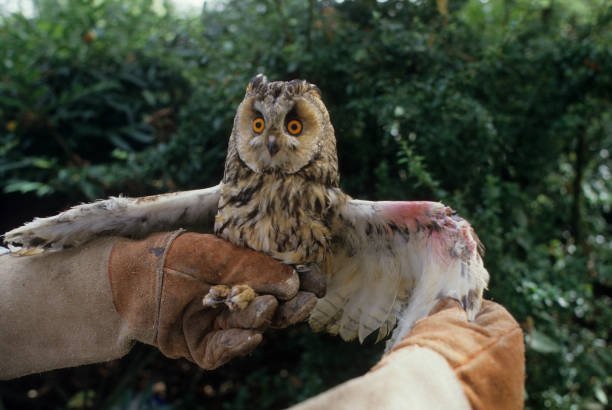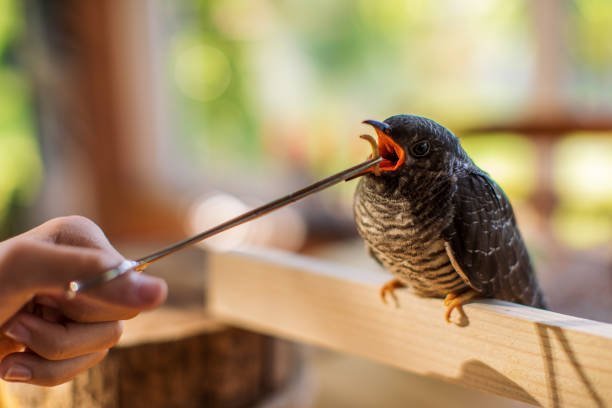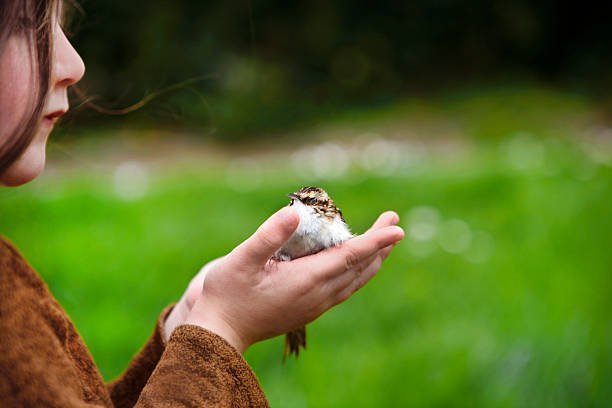How Do I Safely Transport an Injured Bird to a Rescue Center?

Introduction:
In this article, we embark on a compassionate journey aimed at answering vital Encounters with injured birds that can be both distressing and urgent, and knowing the proper steps to assist them can make a significant difference in their chances of survival. Birds, with their delicate physiques and intricate anatomy, require special care during transport to ensure their well-being.
In this exploration, we will provide you with essential guidance on safely and effectively transporting an injured bird to a rescue center. Whether you’re a concerned passerby, a wildlife enthusiast, or simply someone who wants to lend a helping hand, understanding the correct procedures can mean the world to a feathered friend in need. Join us as we uncover the steps and precautions necessary to become a responsible and effective avian rescuer.
Assessing the Bird’s Condition:
Before attempting to transport an injured bird, it’s essential to assess its condition carefully. Approach the bird calmly and quietly, keeping a safe distance to avoid causing further stress. Observe the bird’s behavior, posture, and any visible injuries. Look for signs of distress, such as labored breathing, blood, or obvious broken bones. If the bird is conscious and alert, it may be able to fly or move away once it feels safe.
If the bird is in critical condition or unconscious, it’s crucial to proceed with caution to prevent any additional harm. Gently approach, covering the bird with a cloth or towel to reduce stress and minimize the risk of injury to both the bird and yourself. Do not attempt to force-feed or give water to the bird, as this can lead to aspiration. Instead, focus on keeping the bird calm and reducing its exposure to stressors.
Preparing for Safe Handling:
Handling an injured bird requires preparation to ensure the safety and well-being of both you and the bird. Start by wearing protective gloves to minimize the risk of injury and to avoid direct contact with any potential contaminants. If possible, have a box or container ready for transport, lined with a soft, clean cloth or paper towels to provide a comfortable surface for the bird.
Approach the injured bird cautiously and, if necessary, gently cover it with a cloth or towel, taking care not to further injure or stress the bird. This step helps keep the bird calm and prevents it from becoming more agitated during handling. Ensure that the container you plan to use for transport has adequate ventilation to provide fresh air to the bird. Keep the container in a quiet, dark, and warm place, as darkness and warmth can help reduce stress for the injured bird.
Using Proper Containment:
Proper containment is crucial when transporting an injured bird to a rescue center. Place the injured bird carefully into the prepared container, ensuring that it has enough room to move comfortably but not so much space that it can thrash around and injure itself further during transport. It’s essential to secure the lid or cover of the container to prevent escape.
Ventilation holes should be present in the container, but they should not be large enough to allow the bird to escape or become entangled. Be mindful of the material used for the container – it should be sturdy and easy to clean. Avoid using containers with sharp edges or materials that could harm the bird. Finally, ensure that the container is labeled with information about the bird’s condition, location of rescue, and the time of rescue, as this information will be helpful for the professionals at the rescue center.
Proper containment not only keeps the bird safe during transport but also minimizes stress, which is essential for the bird’s overall well-being. It ensures that the bird arrives at the rescue center in the best possible condition for evaluation and treatment.
Minimizing Stress and Trauma:
Minimizing stress and trauma is essential when transporting an injured bird. Birds can become highly stressed when injured or handled, which can exacerbate their condition. To reduce stress, keep the bird in a quiet, dark, and warm environment. Excessive noise and exposure to bright lights can be distressing for the bird. Limit human interaction as much as possible during transport, as well-intentioned but excessive handling can further stress the bird.
During transportation, secure the container to prevent it from moving or shifting, which can cause additional stress to the bird. Ensure that the container is placed securely in your vehicle to minimize jostling during the journey. Avoid sudden stops, sharp turns, and rapid acceleration, which can cause the bird inside to become more agitated. Minimizing stress is crucial to the bird’s well-being and increases the chances of a successful rescue and rehabilitation.
Contacting a Rescue Center:
Once you have safely contained the injured bird, your next step is to contact a reputable bird rescue center or wildlife rehabilitation facility. Do some research in advance to identify the nearest rescue center that can provide appropriate care for the bird’s species. Many rescue centers have specific expertise in different types of birds.
When you make contact, be prepared to provide detailed information about the bird’s condition, location of rescue, and any observations you made. This information will help the rescue center assess the urgency of the situation and provide guidance on the best course of action. Some rescue centers may have specific instructions for transport or may even offer to send a trained rescuer to pick up the injured bird.
Transporting and Monitoring the Bird:
During transportation, it’s crucial to keep a watchful eye on the injured bird. Ensure that the container is securely closed but ventilated to provide fresh air. Place the container in a stable position in your vehicle, ideally on the floor of the backseat or in a well-secured carrier. Avoid exposing the bird to extreme temperatures, whether hot or cold, during transit.
While driving, make minimal noise and avoid sudden movements that could startle or stress the bird. Periodically check on the bird without opening the container, as excessive handling can be stressful. If you notice any changes in the bird’s condition, such as increased distress or signs of worsening injuries, contact the rescue center immediately for guidance.
Minimizing stress and trauma, contacting a rescue center promptly, and ensuring safe transportation are essential steps when helping an injured bird. These actions collectively contribute to the bird’s chances of receiving timely and appropriate care, ultimately increasing the likelihood of successful rehabilitation and release back into the wild.
Conclusion:
I hope this guide on safely transporting an injured bird to a rescue center has equipped you with the knowledge and confidence to take action when you encounter a bird in distress. In these crucial moments, your intervention can mean the difference between life and death for an injured bird.
Minimizing stress and trauma, contacting a rescue center promptly, and ensuring safe transportation are the key steps in this process. By following these guidelines, you not only increase the bird’s chances of recovery but also contribute to the vital work of bird rescue organizations and wildlife rehabilitators.
Remember that your compassionate efforts can have a profound impact on the well-being of these magnificent creatures, allowing them a second chance to soar the skies and contribute to the beauty and diversity of our natural world. Each rescue is a testament to the power of human kindness and our shared responsibility to protect and care for the wildlife that shares our planet.










Post Comment